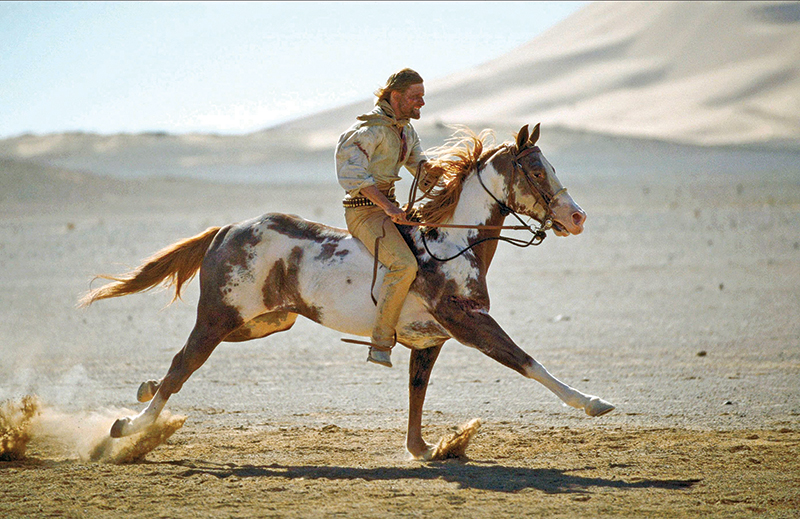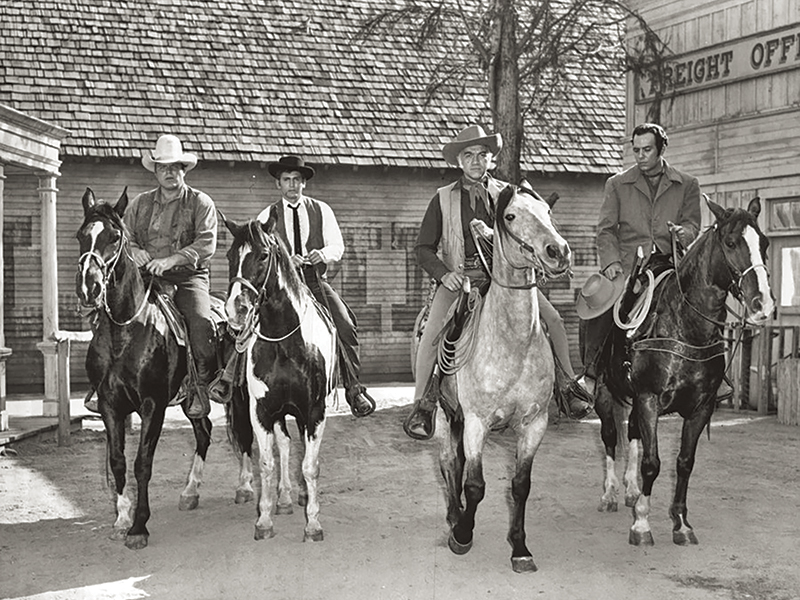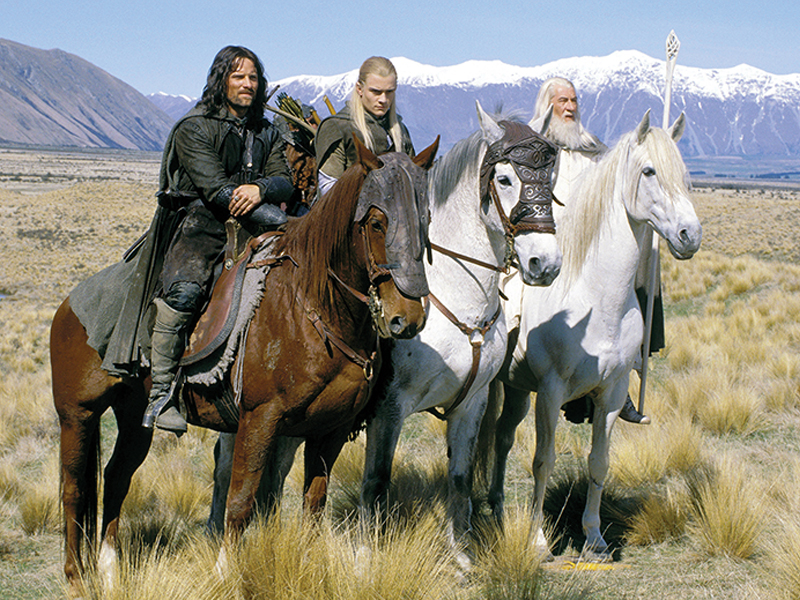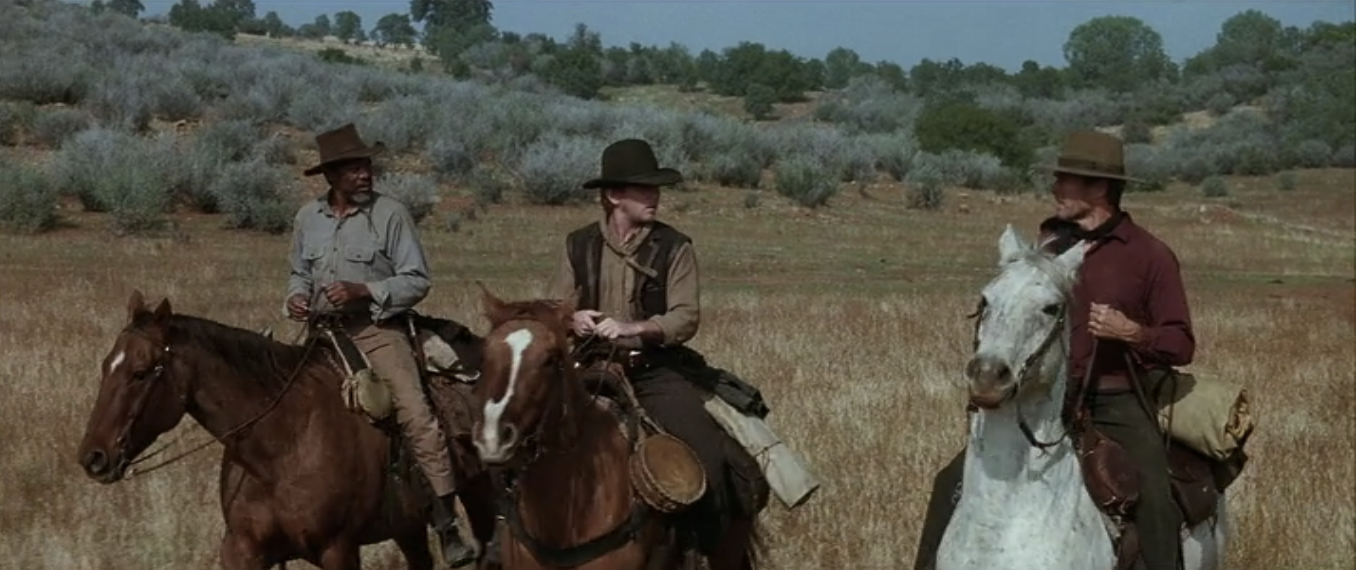Did you know that horseback riding has had a significant influence on the film industry? It’s true! Countless movies and TV shows have featured epic horseback riding scenes that have left us in awe. From the iconic westerns to medieval fantasy flicks, horses have played a major role in bringing these stories to life on the big screen. But what exactly is it about horseback riding that captivates audiences and filmmakers alike? In this article, we’ll delve deeper into the world of horseback riding and explore its impact on the film industry. So, whether you’re a horse lover or simply curious about the connection between horses and movies, stay tuned for a fascinating ride!
When it comes to horseback riding and the film industry, there’s so much to uncover. From the majestic beauty of horses galloping across vast landscapes to the thrilling chase scenes that keep us on the edge of our seats, equine performances have become a cinematic art form in their own right. Not only do horses add a sense of authenticity and grandeur to films, but they also create a unique visual experience that transports viewers into different eras and worlds. Think about it – can you imagine Braveheart without its breathtaking horseback battles or The Lord of the Rings without the majestic presence of Gandalf riding Shadowfax? In this article, we’ll explore the history of horseback riding in films, the challenges faced by filmmakers when working with horses, and some of the most iconic horseback riding moments in cinematic history. So, saddle up, because we’re about to embark on an exciting journey through the captivating world of horseback riding in the film industry!
The History of Horseback Riding

Ancient Origins of Horseback Riding
Horseback riding dates back to ancient times, with evidence of its existence found in numerous civilizations throughout history. The domestication of horses played a crucial role in the development of equestrian activities. As early as 4000 BC, the ancient Egyptians were known to have used horses for transportation and warfare. In Mesopotamia, around 2000 BC, the Hittites and the Assyrians were skilled horse riders and charioteers.
Horseback Riding in Medieval Times
During the medieval period, horseback riding took on new significance as knights and warriors rode horses into battle. The concept of chivalry and the code of conduct associated with knighthood glorified horseback riding as a symbol of honor and bravery. Jousting tournaments became popular displays of horsemanship and knightly skills.
The Evolution of Horseback Riding Techniques
Over the centuries, the techniques and equipment used in horseback riding have evolved significantly. From the development of saddles and stirrups in ancient Asia to the introduction of spurs and reins in Europe, each innovation enhanced the rider’s control and stability on horseback. Different riding styles, such as dressage, show jumping, and western riding, emerged as riders experimented with various techniques.
Horseback Riding as a Sport
Different Types of Horseback Riding Competitions
Today, horseback riding is not just a means of transportation or a martial skill; it has become a popular sport with a wide range of competitions. Dressage, also known as “horse ballet,” emphasizes the horse’s precision, grace, and obedience to the rider’s commands. Show jumping tests the athleticism and jumping abilities of both horse and rider. Cross-country events combine elements of endurance and jumping over natural obstacles.
Training and Equipment for Competitive Horseback Riding
Competitive horseback riding requires extensive training for both the rider and the horse. Riders must develop balance, coordination, and communication skills to effectively control their horses. Horses need to be conditioned, trained in specific disciplines, and equipped with appropriate gear, including saddles, bridles, and protective boots.
Famous Horseback Riding Competitions and Events
Several renowned horseback riding competitions and events attract participants and spectators from around the world. The Olympics feature equestrian disciplines such as dressage, show jumping, and eventing. The Kentucky Derby, one of the most prestigious horse racing events, showcases the speed and agility of Thoroughbred racehorses. The Royal Ascot in the United Kingdom is a popular social and sporting event that combines horse racing and opulent fashion.
The Role of Horses in the Film Industry

Horses in Early Films
Since the inception of cinema, horses have played significant roles in films. During the silent film era, horses were often featured in action-packed Western movies and adventure films. Their presence added excitement, danger, and realism to the storytelling.
Famous Horse Actors in Movies
Several horses have gained fame as “horse actors” and have left a lasting impact on the film industry. Perhaps the most iconic horse actor is Silver, the trusty steed of the Lone Ranger. Other notable horse actors include Trigger, the palomino ridden by Roy Rogers, and Seabiscuit, the real-life racehorse turned movie star in the film bearing his name.
The Importance of Authentic Horseback Riding Scenes in Films
Authenticity is crucial in film production, and horseback riding scenes require careful attention to detail. Skilled riders and well-trained horses are essential to portray realistic and convincing equestrian movements. Proper coordination between the actors and the horses ensures that the scenes are not only visually pleasing but also safe for all involved.
Horseback Riding Stunts in Movies
The Training and Skill Required for Horseback Riding Stunts
Horseback riding stunts in movies demand high levels of expertise from both the riders and the horses. Stunt performers must possess advanced riding skills, including galloping, jumping, and even riding while standing on the horse’s back. Horses are trained to respond to specific cues and perform daring maneuvers for the camera.
Famous Horseback Riding Stunt Performers
Just as some actors become famous for their horseback riding roles, certain stunt performers have made their mark in the industry. Among the notable names are Yakima Canutt, known for his innovative stunt techniques in classic western films, and Bobby Holland Hanton, a modern-day stuntman who has performed horseback stunts in blockbuster movies.
Iconic Horseback Riding Stunts in Film History
Numerous iconic horseback riding stunts have captured the imagination of audiences over the years. The chariot race scene from “Ben-Hur” (1959) is a prime example of thrilling equestrian action. The breathtaking chase scene in “The Lord of the Rings: The Two Towers” (2002) showcases the skill and agility of the riders and their horses.
Horseback Riding in Western Films

Depiction of Horseback Riding in Classic Western Films
Western films have long been associated with horseback riding, symbolizing the ruggedness and independence of the American frontier. From the early days of silent films to the golden age of Hollywood, cowboys, outlaws, and lawmen on horseback became iconic figures. Films like “The Searchers” (1956) and “Once Upon a Time in the West” (1968) feature memorable horseback riding sequences that have become part of cinema history.
Role of Horses in Western Film Storytelling
In Western films, horses are not merely modes of transportation. They represent freedom, power, and the connection between humans and the untamed natural world. Often, the bond between a cowboy and his horse serves as a central theme, emphasizing the trust and loyalty between the two.
Influence of Western Films on Horseback Riding Popularity
The popularity of horseback riding owes much to the enduring appeal of Western films. Countless individuals have developed an interest in horseback riding, inspired by the romanticized portrayals of cowboys and their horses. Riding schools and ranches across the country have seen an increase in participation, and the demand for Western-style gear and equipment continues to grow.
Horseback Riding in Action Films
Horseback Riding in Action and Adventure Movies
Action and adventure films often incorporate thrilling horseback riding sequences to elevate the excitement and intensity of the story. From epic battles to daring escapes, horses are integral to creating visually stunning and action-packed scenes. Films like “Gladiator” (2000) and “The Last Samurai” (2003) feature gripping equestrian action that captivates audiences.
The Use of Horseback Riding in Chase Scenes
Chase scenes, a staple of action films, frequently utilize horseback riding to add a unique dimension to the pursuit. The speed, agility, and maneuverability of horses make them ideal for thrilling and dynamic chase sequences. Movies such as “Braveheart” (1995) and “The Revenant” (2015) showcase horseback chase scenes that leave viewers on the edge of their seats.
Horseback Riding as a Key Element of Action Film Visuals
In addition to providing excitement and adrenaline, horseback riding contributes to the visual appeal of action films. The sweeping landscapes, charging horses, and skilled riders create a visually striking tableau that immerses the audience in the heart-pounding action. Directors and cinematographers carefully choreograph these scenes to maximize their impact on the screen.
Horseback Riding in Historical Films

Recreating Historical Horseback Riding Techniques
Historical films strive for authenticity in depicting the past, and horseback riding plays a significant role in capturing the essence of a bygone era. Actors and riders undergo training to learn the specific riding techniques of different time periods. From medieval jousting in “A Knight’s Tale” (2001) to Napoleonic cavalry charges in “War and Peace” (1956), equestrian accuracy is crucial to recreating the past.
Horses as Symbolic Elements in Period Films
Horses have symbolism and cultural significance in historical films. They embody power, class, and nobility, reflecting the societal structures and values of the time. Whether portraying medieval knights or 19th-century aristocracy, horses convey the grandeur and elegance of historical periods.
Equestrian Accuracy in Historical Film Representations
Accurate representation of horseback riding is vital for historical films to maintain credibility. Historical equestrian experts are often consulted to ensure that the horses’ tack, equipment, and riding styles align with the specific time period depicted in the film. This attention to detail enhances the overall authenticity and immersive experience for viewers.
The Influence of Horseback Riding on Film Genres
Western Films and the Popularity of Horseback Riding
Western films have had a profound influence on both the film industry and horseback riding culture. The timeless appeal of cowboys, their daring exploits, and their trusted steeds has shaped the perception of horseback riding as an iconic American pastime. Western-style riding and horsemanship have become highly sought-after skills among enthusiasts.
Action Films and the Thrill of Horseback Riding
Action films leverage the thrill and excitement that horseback riding inherently brings to the screen. The fast-paced and high-stakes nature of these films often calls for skilled horseback riding sequences to create a visually spectacular experience for viewers. The integration of horses into action films has expanded the horizons of horseback riding as a cinematic medium.
Historical Films and the Equestrian Aesthetic
Historical films often rely on horses to capture the essence of a particular era and evoke a sense of grandeur. The rich tapestry of historical stories benefits from the equestrian aesthetic, as the sight of well-trained horses and skilled riders on screen transports audiences back in time. Horseback riding adds a layer of authenticity and elegance to historical narratives.
Famous Films Featuring Memorable Horseback Riding Scenes

Classic Films with Iconic Horseback Riding Moments
Classic films have delivered unforgettable horseback riding scenes that have left an indelible mark on cinematic history. “Gone with the Wind” (1939) features the iconic image of Rhett Butler riding away on horseback, while “Lawrence of Arabia” (1962) showcases epic desert horseback riding sequences that have become cinematic landmarks.
Notable Horseback Riding Scenes in Contemporary Movies
Contemporary films continue to push the boundaries of horseback riding sequences, delivering memorable scenes that captivate audiences. In “The Lord of the Rings” trilogy (2001-2003), the stunning horseback charge of the Rohirrim against the forces of Mordor remains etched in viewers’ minds. “The Revenant” (2015) features a spellbinding horseback pursuit through treacherous terrain.
Critically Acclaimed Films Showcasing Horseback Riding
Many critically acclaimed films have harnessed the power of horseback riding to enhance their narratives and create visually stunning moments. “The Black Stallion” (1979) tells the story of a boy and a horse stranded on a deserted island, showcasing a powerful bond between human and animal. “Seabiscuit” (2003) chronicles the real-life triumphs of a racehorse, intertwining the story of his jockey and owner.
The Role of Horse Trainers and Wranglers in the Film Industry
The Importance of Skilled Horse Trainers on Film Sets
Skilled horse trainers play a vital role in the film industry, ensuring the safety and well-being of the horses involved in productions. They work closely with actors, directors, and stunt coordinators to train horses for specific scenes, allowing them to perform complex actions while maintaining their welfare.
Responsibilities of Horse Wranglers in Movies
Horse wranglers are responsible for sourcing and managing the horses needed for film productions. They select horses based on specific requirements, facilitate transport to set locations, and provide the necessary care and maintenance throughout the filming process. Horse wranglers collaborate with various departments, such as the art department and the costume department, to ensure a cohesive vision.
Collaboration Between Horse Trainers and Film Crew
Effective communication and collaboration between horse trainers and the film crew are essential for creating an authentic and safe on-screen experience. Horse trainers must work closely with directors and cinematographers to plan and execute horseback riding sequences. This collaboration ensures that the horses’ welfare is prioritized, and the visual requirements of the film are met.
Challenges and Safety Considerations in Filming Horseback Riding Scenes
Ensuring Horse and Rider Safety on Film Sets
Filming horseback riding scenes poses inherent risks to both horses and riders. Safety precautions must be taken to protect their well-being throughout the shoot. Proper training, regular veterinary check-ups, and monitoring of the horses’ behavior and comfort are essential. Riders must wear appropriate safety gear, and stunt performers require extensive training and rehearsal to minimize the risk of injury.
Addressing Ethical Concerns in Horseback Riding Filming
Ethical considerations are paramount when using horses in film productions. The treatment and welfare of the animals must be the top priority. Guidelines and regulations, such as those set by animal welfare organizations, help ensure that horses are not subjected to unnecessary stress or harm during filming. Trainers, wranglers, and the entire film crew must adhere to these standards.
Overcoming Technical Challenges in Capturing Horseback Riding
Filming horseback riding scenes presents unique technical challenges. Stable camera shots, smooth tracking shots, and dramatic angles require careful coordination between riders, horses, and camera operators. Technological advancements, such as gyroscopic camera stabilizers and drones, have aided in capturing dynamic horseback riding sequences without compromising safety.
The Influence of Horseback Riding Films on Pop Culture
Impact of Horseback Riding Films on Fashion and Style Trends
Horseback riding films have had a significant impact on fashion and style trends. The equestrian aesthetic, with its emphasis on elegance, tailored outfits, and riding gear, has influenced haute couture and everyday fashion alike. Riding boots, jodhpurs, and tweed jackets have become iconic pieces associated with equestrian style.
Popularization of Equestrian Activities through Movies
Horseback riding films have played a crucial role in popularizing equestrian activities among the general public. The portrayal of horse riding as a fascinating and exciting pursuit has inspired countless individuals to take up horse riding lessons and explore the world of equestrian sports. Riding schools and clubs have experienced increased interest from enthusiasts driven by their cinematic experiences.
Horseback Riding Films and the Enthusiast Community
Horseback riding films have helped foster a passionate and engaged enthusiast community. Fans of the sport and horse riding culture connect and share their love for horses, riding techniques, and cinematic interpretations. Online forums, social media groups, and dedicated fan events bring enthusiasts together to discuss their favorite films and celebrate their common interest.
Representation of Horseback Riding in Animated Films
Depiction of Horseback Riding in Animated Movies
Animated films often feature delightful and imaginative depictions of horseback riding. From beloved Disney classics like “Mulan” (1998) to recent hits such as “Raya and the Last Dragon” (2021), animated movies bring horses and their riders to life in vivid and enchanting ways. These films capture the magic and adventure of horseback riding, appealing to audiences of all ages.
Famous Animated Films Showcasing Horseback Riding
Several animated films have become synonymous with horseback riding, captivating audiences worldwide with their captivating stories and stunning visuals. “Spirit: Stallion of the Cimarron” (2002) combines breathtaking animation with a heartfelt narrative about a wild stallion’s journey. The iconic horse Maximus in Disney’s “Tangled” (2010) adds humor and excitement to the film through his charmingly animated riding skills.
Animals and Riding in Fantasy Animated Films
Fantasy animated films often feature horses as key characters and integral components of the story. These films blend reality and imagination, portraying horses with magical abilities, such as the talking horse Khan from “Mulan” (1998). The bond between humans and fantastical creatures on horseback serves as a powerful symbol of unity and adventure.
Conclusion
Horseback riding has undoubtedly left an indelible mark on the film industry. From its ancient origins to its representation in various film genres, horseback riding has captivated audiences and inspired viewers to experience the thrill and elegance of equestrian pursuits. Through its influence on fashion, style, and pop culture, horseback riding continues to fascinate and enchant both on and off the screen. Whether as a means of transportation, a sport, or a visual spectacle, horseback riding remains an enduring element of cinematic storytelling.
